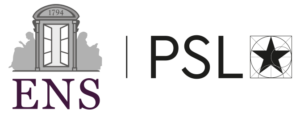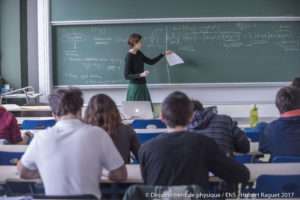Matti Järvinen came to the Institute in October 2014. He had earned his PhD in 2007 in Helsinki and had done postdocs at the University of southern Danmark and at the University of Crete. During the first few months since his arrival, he finished two projects related to holographic QCD. In collaboration with researchers from the University of Helsinki, the University of Crete, and the University of Iceland, he analyzed [12] corrections to the equation of state for holographic QCD at small temperatures. In earlier work it had been noticed that the pressure obtained in the holographic model (V-QCD) was trivial at low temperatures. It did not include contributions from hadron states which should appear at leading order in the Veneziano limit where the model was defined. In the new article, these corrections to the pressure were estimated simply by using known expressions for the free hadron gas, containing the pions and massive states distributed according to the Hagedorn spectrum. By matching with the high temperature pressure obtained directly by using the holographic model, it was demonstrated that a second or a third order chiral transition could be obtained.
The other recent work [13] discusses the dependence of holographic QCD on the quark mass. A phase diagram as a function of the quark mass and the ratio of the number of flavours and colours x = Nf /Nc was sketched. The dependence on the quark mass of observables such as the bound state masses, the chiral condensate, the S-parameter, and the critical temperatures was studied. Many of the results were argued to be universal, i.e., independent of the details of the holographic model, and compared to explicit computations in the V-QCD models. The effect of adding four-fermion operators in QCD was also discussed.
In the period from February 2015 to October 2016 M. Järvinen has finished two projects. First, the study of a generalization of the Bjorken flow in heavy-ion collisions which was done in collaboration with G. Policastro (ENS) and U. Gürsoy (University of Utrecht) and started in late 2014 was finished in late 2015 and published in JHEP [14]. They used a non-conformal holographic background to demonstrate that the cooling of the plasma is slowed down at late times due to the breaking of the conformal symmetry. Second, a study QCD at finite θ-angle and the physics of the axial anomaly, using a holographic model with full backreaction of the quarks to the gluon dynamics was just finished in September 2016 [15].
This extensive study went beyond the level of effective free theories, but also recovered the results of effective field theories in regimes where they can be used. It was done in collaboration with D. Arean (MPI Munich), I. Iatrakis (University of Utrecht), and E. Kiritsis (University of Crete and APC, Paris).
Two more projects of M. Järvinen will be finished soon. He has continued collaboration with N. Jokela (University of Helsinki) and M. Lippert (Long Island University) on applying top-down holography to condensed matter physics. They will show that the DC and optical conductivities of the striped ground state (i.e., spontaneaously broken translation symmetry) in a D3-D7 brane configuration which was constructed in their earlier work involve interesting novel features.
He is also studying backreacted holographic QCD under strong magnetic fields with U. Gürsoy, I. Iatrakis, and G. Nijs from the University of Utrecht. In particular they will demonstrate that holographic models are able to reproduce in detail the decrease of the chiral condensate with increasing magnetic field near the critical temperature of QCD, coined “inverse magnetic catalysis”, which has been recently observed on the lattice.
M. Järvinen has several additional ongoing projects. As a continuation of [14], quasi normal modes of the decaying plasma are being studied. Near a critical point of the system, certain two-point correlators of the energy-momentum tensor can be solved exactly, showing that hydrodynamics breaks down near the critical point. His project in collaboration with C. Bachas (ENS) on the Kondo effect has extended to
a more generic study of holographic Wilson lines and related supersymmetric em- beddings of D-branes which realize flows on the N = 4 super Yang-Mills with a defect.
Recently M. Järvinen has also started projects on the dynamics of holographic QCD in the conformal window with I. Iatrakis and E. Kiritsis, as well as a project with T. Alho (University of Iceland) on the overall comparison of back-reacted holographic QCD to lattice and experimental data.

MENUMENU
- Laboratoire
LABORATOIRE

- Recherche
ASTROPHYSIQUE, COSMOLOGIE ET GRAVITATION
- Présentation
- Liste Equipes Axe Astrophysique, Cosmolgie et Gravitation
INTERACTIONS FONDAMENTALES
- Présentation
- Liste Equipe Axe Interactions Fondamentales
PHYSIQUE STATISTIQUE
- Présentation
- Liste Equipe Axe Physique Statistique
- Formation
- Diffusion des connaissances
DIFFUSION DES CONNAISSANCES

- Institut Philippe Meyer (IPM)
- Intranet
Sélectionner une page








